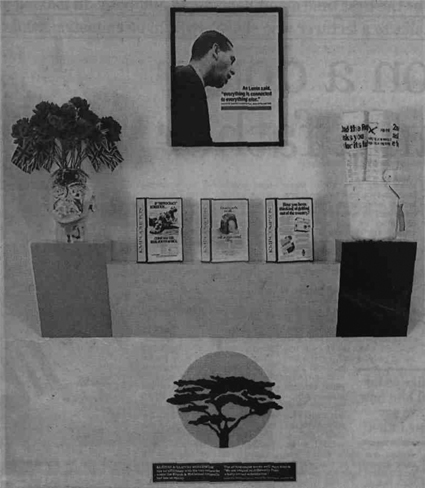Looking for a scrap: Andrew Graham-Dixon on Robert Rauschenberg and Hans Haacke
In Downtown Manhattan, back in the 1950s, Robert Rauschenberg had what he called "a kind of house rule". An urban scaven¬ger, he patrolled the city's streets in search of stuff to make art of — anything that took his fancy, gen¬erally the tattier the better, would do. The rule was that "If I walked completely around the block and didn't find enough to work with, I could take one other block and walk around it in any direction, but that was it."
Aside from giving new meaning to the creative block, Rauschenberg's tactics resulted in a series of works that revolutionised American art. His "combines" — most famously Monogram, a car tyre ringing the midriff of a stuffed angora goat which the artist had found, surreally, in the window of a sec¬ond hand typewriter store — rep¬resented an inspired courtship of accident, implying that anything, if the artist so wished, could be designated art. (He rammed the point home with his epigrammatic contribution to conceptualism — a telegram that read, simply, "This is a portrait of Iris Clert if I say so.")
Rauschenberg — still going strong, on the evidence of his cur¬rent show at Waddington — once defined New York as "a maze of unorganised experiences peopled by the unexpected." But he added that those perceptive enough to see it would find in this chaos "an extremely complex random order." Rauschenberg is the city's mystic and mythographer — trawling his urban environment, he finds its divinities in rubbish. Monogram is more than the sum of its parts — the goat, time-honoured priapic symbol, encir¬cled by Rauschenberg's old tyre, becomes an image of the city's copulatory vigour, an icon of the ceaseless, incongruous couplings engineered by New York's...


